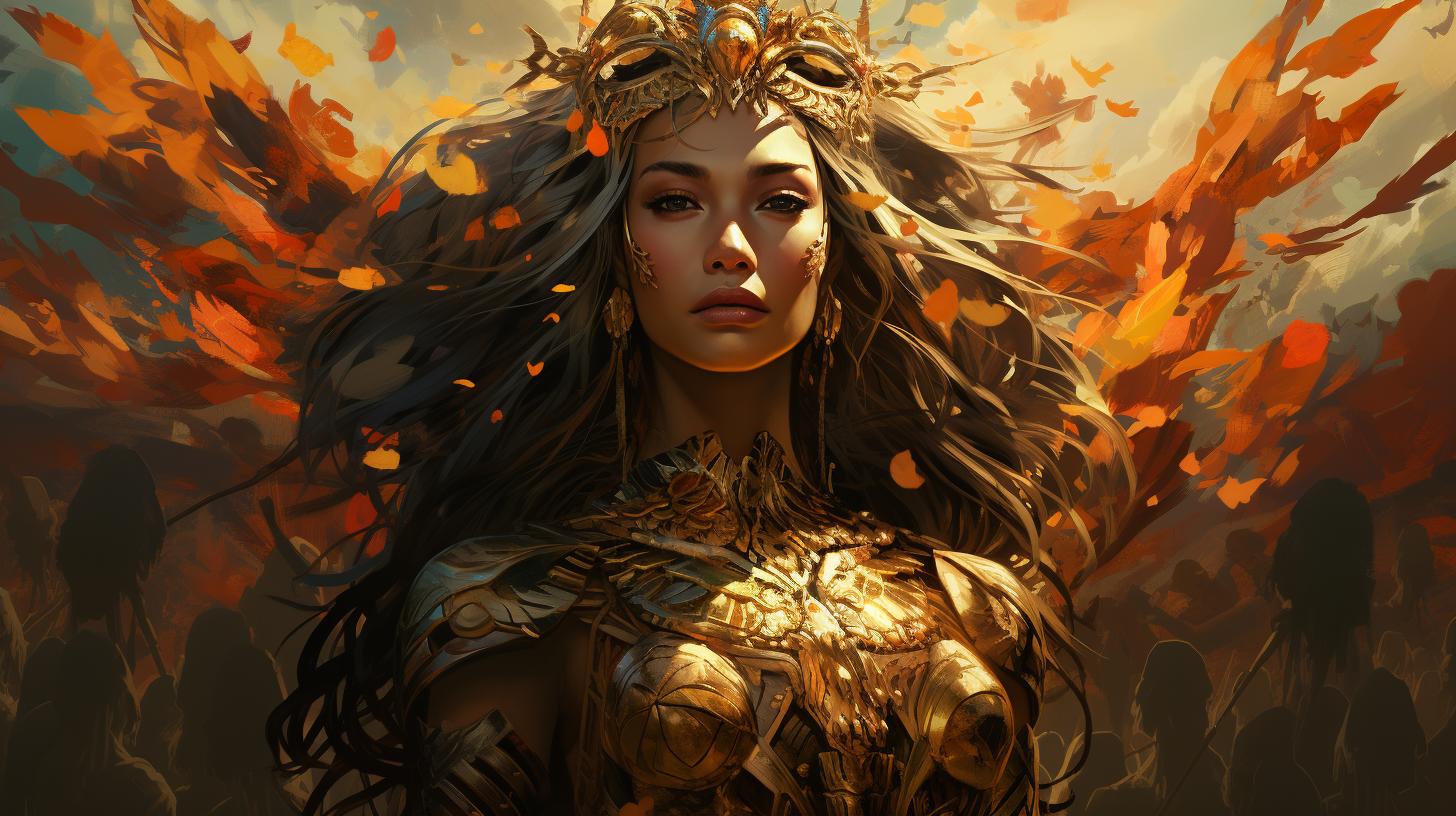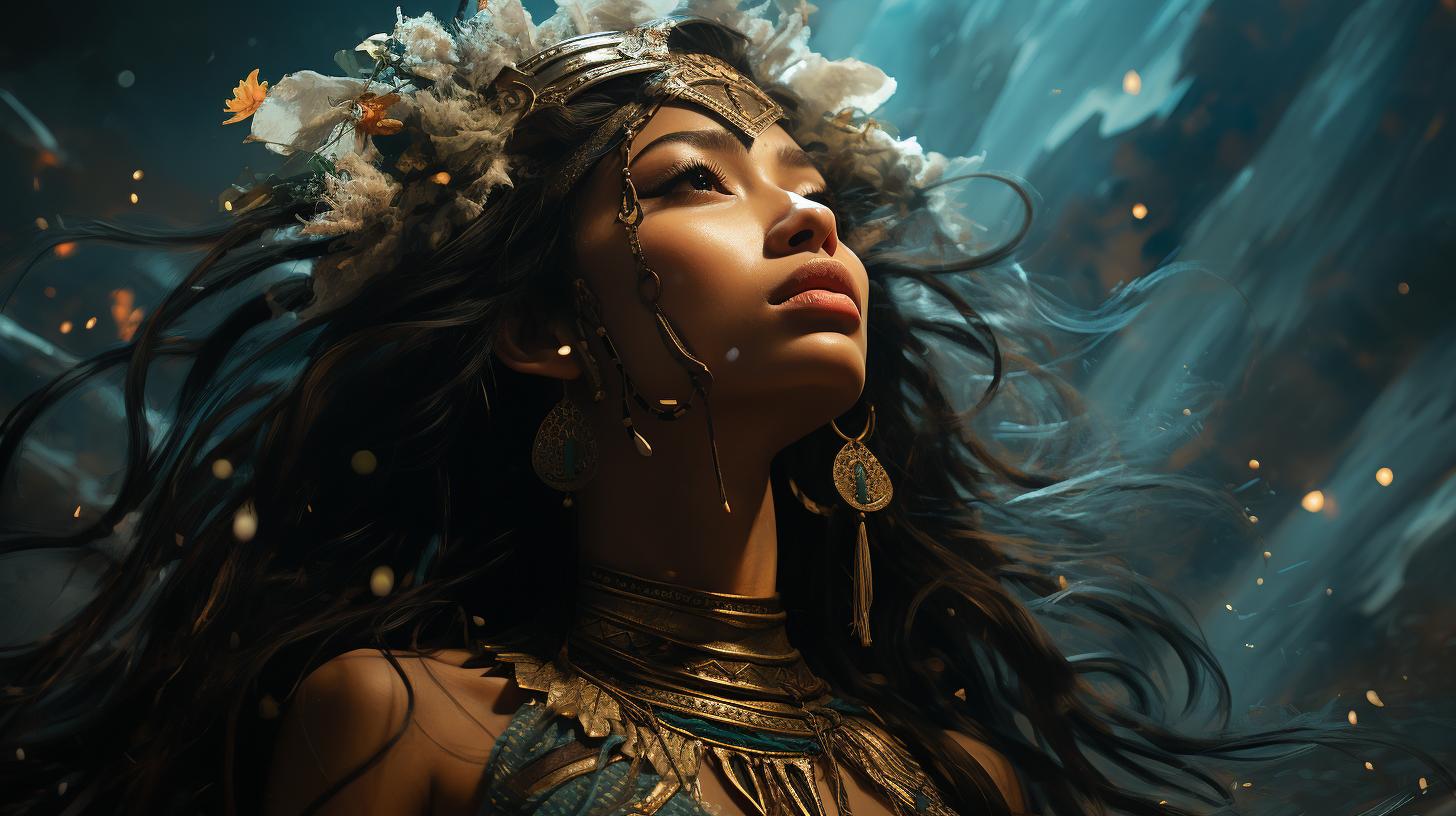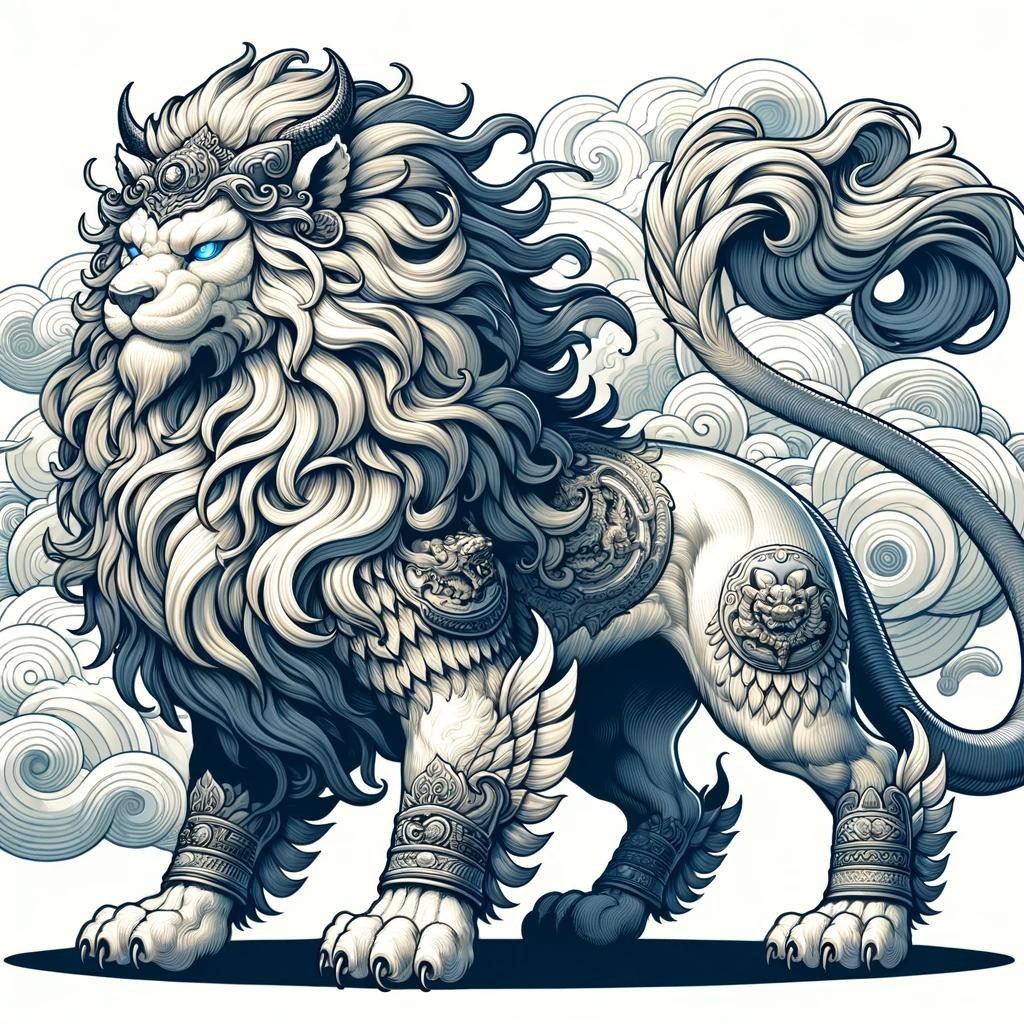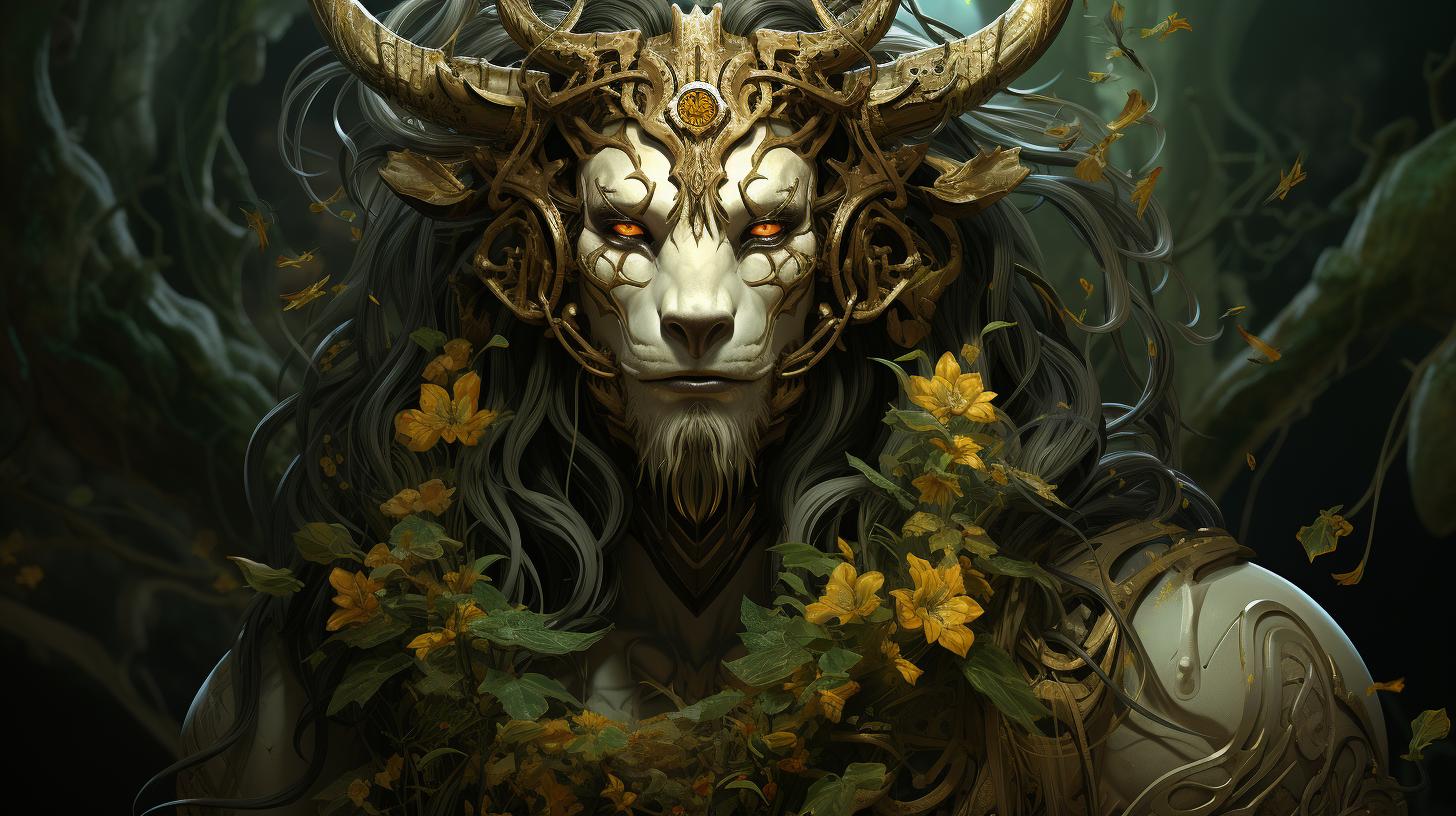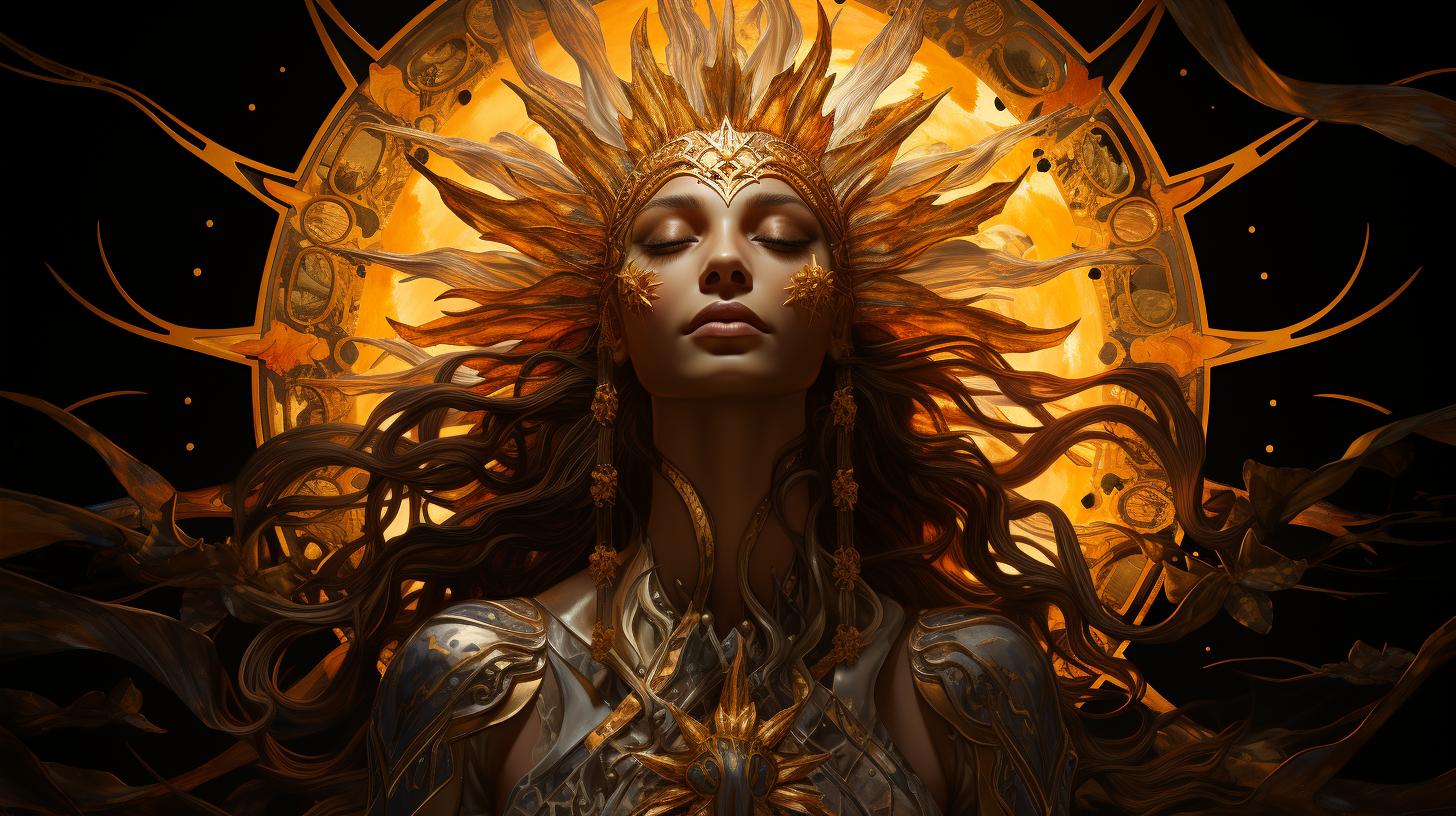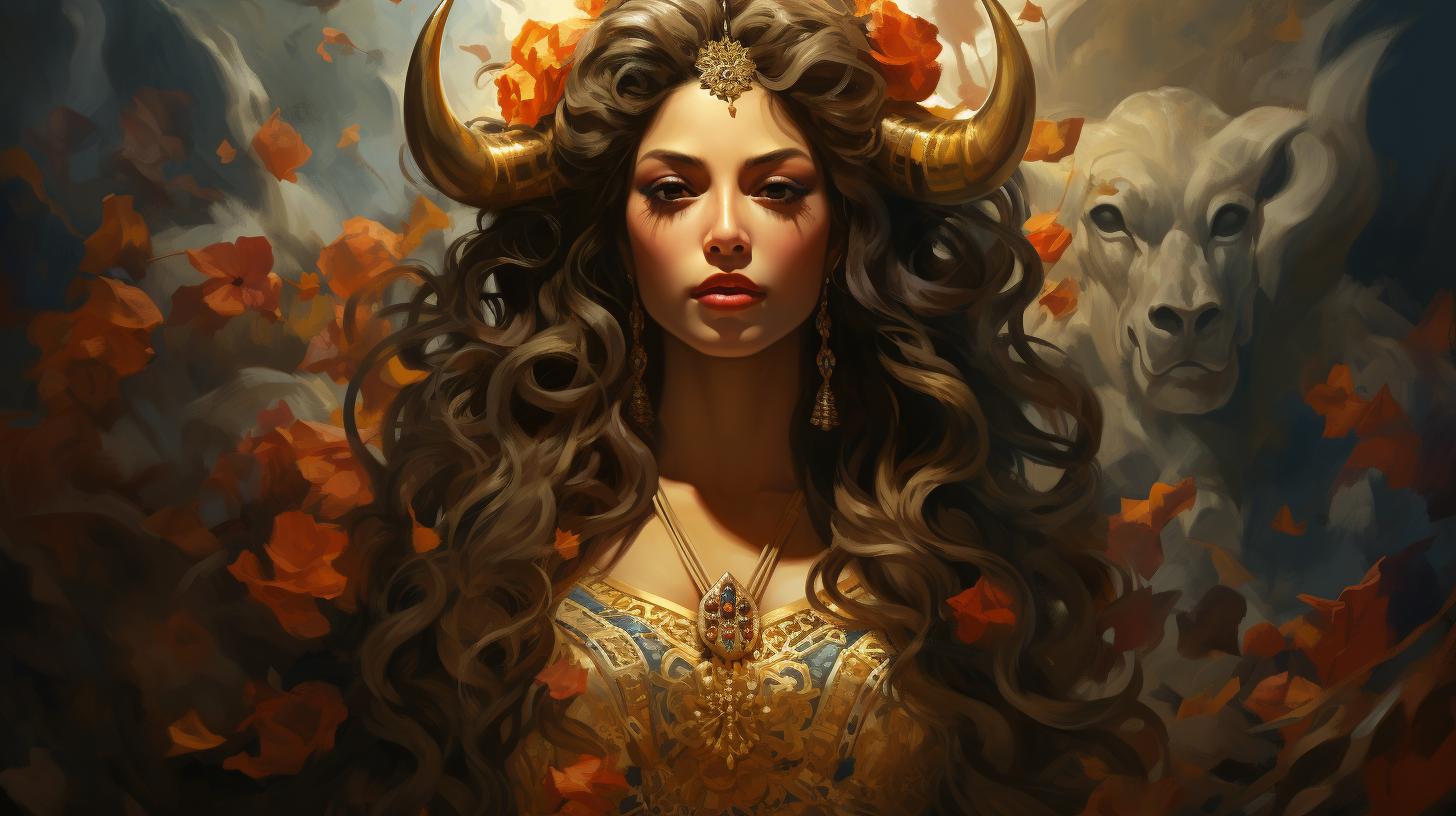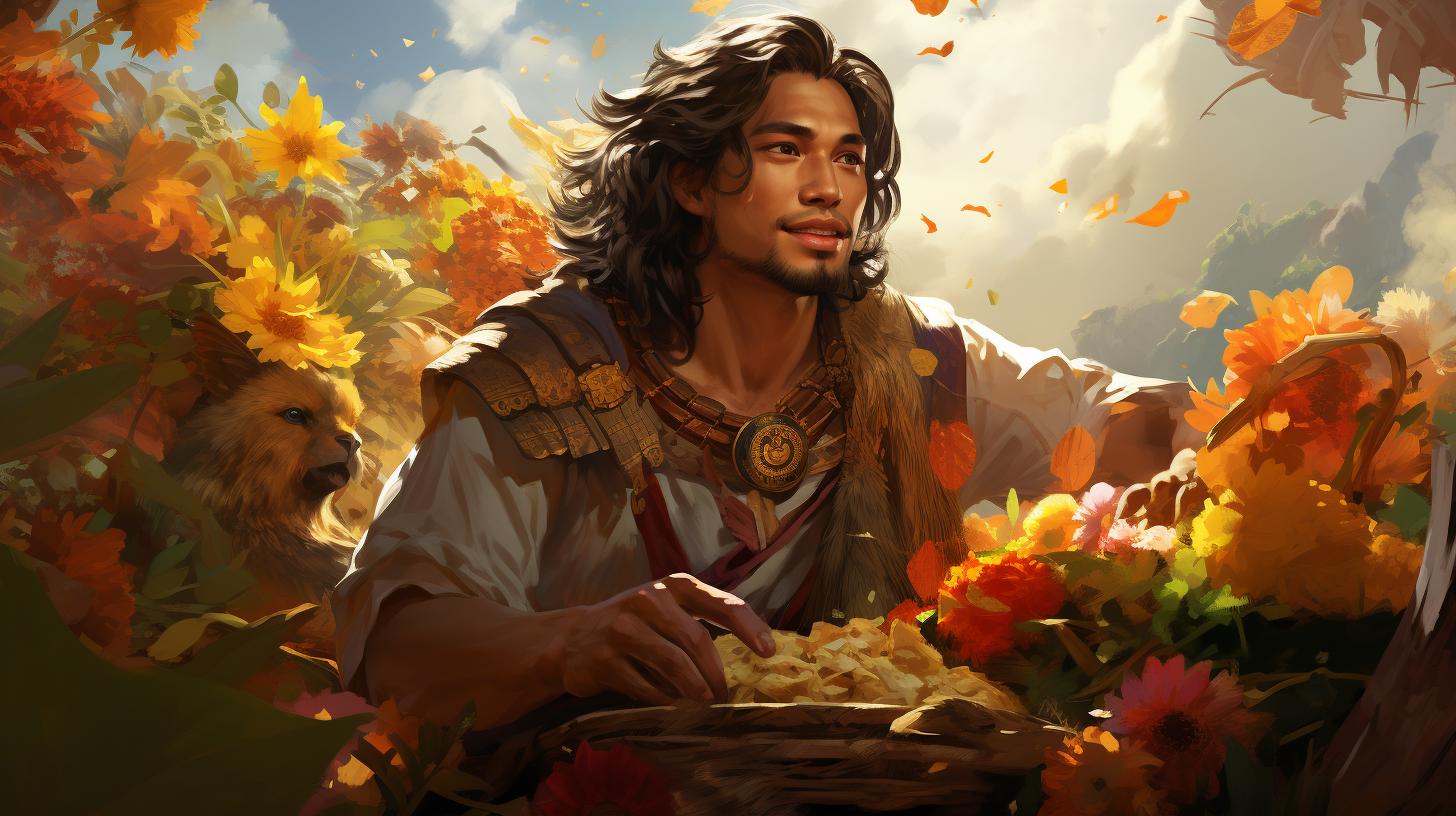Overview of Lakambakod Philippine Mythology
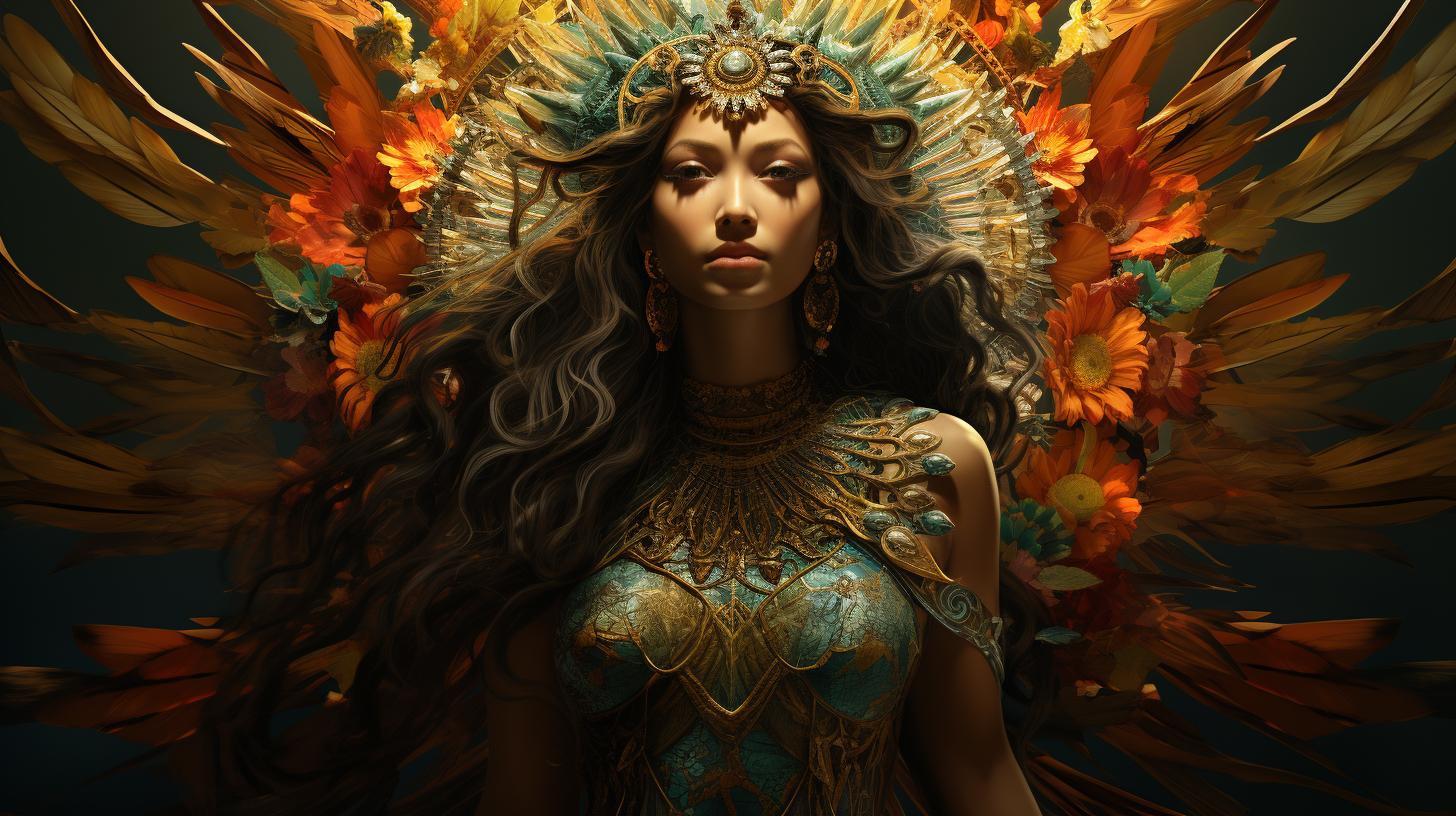
In Lakambakod Philippine mythology, Lakambakod is a revered god associated with crop protection and defense. Believed to ward off animals from farmlands, Lakambakod was offered eels to bless the fences surrounding the crops.
Depicted in pre-Hispanic artworks with golden genitals symbolizing fertility and prosperity, Lakambakod held significance in agricultural practices. Other deities and creatures, such as Lachan Bacor, Amanikable, and Kapre, are also present in Philippine mythology.
The mythology encompasses beliefs in fortification construction, seeking divine guidance, and strengthening defense tools. These mythical figures contributed to the cultural significance and understanding of Filipino society.
Overview of Lakambakod Philippine Mythology
In Lakambakod Philippine mythology, the deity Lakambakod holds a significant role as the god of crop protection and defense.
This ancient belief system originated in the Philippines, contributing to the cultural tapestry of the region.
The mythology surrounding Lakambakod emphasizes the deity’s role in maintaining the integrity of farmlands and warding off animals that could potentially damage crops.
Lakambakod was revered as a guardian god, invoked by the farmers to ensure the prosperity and abundance of their harvests.
Specific rituals and beliefs were associated with Lakambakod. Farmers would offer anguilas, or eels, as a tribute and blessing to strengthen the fences surrounding their crops.
It was believed that these blessed fences, sanctioned by Lakambakod, provided the utmost protection against any intrusions.
Lakambakod’s connection to fertility is also evident in their depiction in pre-Hispanic artwork, characterized by golden genitals symbolic of abundance and prosperity.
The presence of Lakambakod in agricultural practices highlights the importance of fertility and fruitful harvests in the lives of the Filipino people.
Furthermore, Lakambakod is just one of many deities and creatures in the vast tapestry of Philippine mythology.
Lachan Bacor, Amanikable, Amansinaya, and many others contribute to the rich folklore and cultural beliefs of the Filipino people, each with unique stories and significance.
Origins and Background of Lakambakod
Lakambakod holds a prominent position in Philippine mythology as a revered deity associated with protection and defense.
To understand the origins and background of Lakambakod, it is essential to explore the cultural context and beliefs of the Filipino people.
Rooted in ancient Filipino traditions, Lakambakod’s origins trace back to pre-Hispanic times when the indigenous people revered various deities and spirits.
These beliefs were an integral part of their daily lives, shaping their understanding of the world and their place in it.
Lakambakod’s role as a protective god emerged from the agricultural practices of the ancient Filipinos.
As farming was a vital aspect of their subsistence, they sought divine intervention to safeguard their crops from pests and other threats. Lakambakod became the god of crop protection, invoked to keep animals away from the fields and ensure bountiful harvests.
The rituals and ceremonies surrounding Lakambakod were deeply ingrained in the belief systems of the indigenous Filipino communities. The offering of anguila (eels) during the fencing of milpas (farmlands) symbolized the acknowledgment and seek for the god’s blessings upon the crops.
These sacred rituals and offerings were believed to strengthen the fences and provide additional protection against adversities.
Lakambakod’s influence extended beyond agricultural matters as well. Tagalog precolonial societies turned to this deity for guidance and assistance in fortification building and defensive strategies.
The belief in Lakambakod’s role in fortifying tools, such as amulets, showcases the significance attached to this deity in matters of protection and defense.
While the specifics of Lakambakod’s background and origin may vary across different regions and communities in the Philippines, the common thread that unites them is the reverence and reliance on this deity for protection and prosperity.
Lakambakod: The God of Crop Protection
In Lakambakod Philippine mythology, Lakambakod holds a significant role as the god of crop protection. This deity is believed to safeguard farmlands and ensure a fruitful harvest. The beliefs and rituals surrounding Lakambakod highlight the reverence and importance placed upon this god in agricultural practices.
Beliefs and Rituals Surrounding Lakambakod
The belief in Lakambakod’s protective power is deeply ingrained in Filipino culture. Farmers believe that by invoking Lakambakod, they can keep harmful animals away from their crops and prevent any potential damage.
Rituals associated with Lakambakod often involve offerings and prayers to seek the god’s blessing and protection.
Offerings and Prayers to Invoke Lakambakod’s Blessings
To invoke Lakambakod’s blessings, offerings such as anguilas, a type of eel, are presented as a symbol of respect and gratitude. These offerings are made during the construction of fences around the farmland, as it is believed that Lakambakod’s blessings make these fences stronger and more effective in keeping animals at bay.
Farmers also offer prayers, expressing their gratitude and seeking Lakambakod’s continued protection throughout the growing season.
Role of Lakambakod in Agricultural Practices
Lakambakod’s role in agricultural practices extends beyond protecting crops. Farmers seek guidance from Lakambakod to strengthen their tools of defense, such as amulets, which are believed to possess inherent protective powers.
Lakambakod’s influence in agriculture underscores the cultural significance of divine intervention in ensuring the prosperity and abundance of harvests in Philippine farming traditions.
Lakambakod’s Connection to Fertility and Golden Genitals
In Philippine mythology, Lakambakod is not only known as a god of crop protection and defense, but also has connections to fertility and prosperity. Depicted in pre-Hispanic imagery, Lakambakod is often shown with genitals gilded in gold, symbolizing abundance and growth.
These representations highlight the god’s role in ensuring bountiful harvests and the overall fertility of the land.
The association between Lakambakod and the golden genitals emphasizes the belief in the god’s ability to bring blessings and prosperity to the agricultural communities.
It is believed that the god’s influence can be channeled through the offering of anguilas, or eels, which are given as part of the rituals surrounding the blessing of crop fences.
The blessings bestowed by Lakambakod are thought to strengthen the fences and safeguard the crops from harm, thus ensuring a successful harvest.
Furthermore, the connection between Lakambakod and gold represents the importance of wealth and abundance in Filipino culture.
Gold has long been associated with prosperity, power, and divinity, and its presence in Lakambakod’s portrayal reinforces the god’s role in bestowing fertility and economic prosperity.
By understanding Lakambakod’s connection to fertility and golden genitals, we gain insight into the revered role this deity played in ancient Philippine agricultural practices.
The belief in the god’s ability to safeguard and bless crops highlights the importance of agriculture as a foundation of Filipino society, emphasizing the deep-rooted connection between nature, prosperity, and the mythology of the region.
Other Deities and Creatures in Philippine Mythology
In Philippine mythology, aside from Lakambakod, there is a vast array of deities and creatures that hold significance in the folklore and beliefs of the Filipino people. Let’s explore some of these fascinating characters:
Lachan Bacor, Amanikable, Amansinaya, and More
- Lachan Bacor: This deity is associated with the harvest and is believed to bring bountiful crops and prosperity to the farmers.
- Amanikable: Known as the god of the sea, Amanikable is both revered and feared.
It is said that he controls the tides and has the power to cause storms and turbulent waters.
- Amansinaya: Amansinaya is the goddess of the sun and is often depicted as a beautiful woman radiating warmth and light.
She is seen as a symbol of hope and vitality.
Exploring the Beliefs and Legends of Philippine Mythology
Within Philippine mythology, there are countless captivating legends and beliefs that shed light on the cultural heritage of the Filipino people. These stories provide insights into their values, traditions, and understanding of the world around them.
Importance of Mythology in Filipino Culture
The myths and legends of the Philippines play a crucial role in shaping the cultural identity of the Filipino people. They provide a sense of belonging and connection to their ancestral heritage, offering explanations for natural phenomena, moral lessons, and a glimpse into their rich storytelling tradition.
Preserving and Passing Down Mythological Tales
Through oral tradition, storytelling, and artistic expressions, the tales of Philippine mythology have been passed down from generation to generation. This cultural preservation ensures that the knowledge and wisdom embedded within these stories continue to be cherished and celebrated.
- From epic narratives to cautionary tales, Philippine mythology offers a diverse range of stories that captivate and educate.
- These stories often feature supernatural beings, moral dilemmas, and lessons that reflect the values and beliefs of the Filipino people.
- The vibrancy and depth of Philippine mythology continue to inspire artists, writers, and scholars to delve deeper into these ancient tales.
Protection and Defense in Tagalog Precolonial Beliefs
In the precolonial beliefs of the Tagalog people, protection and defense held significant importance.
They understood the need to safeguard their communities, crops, and livelihoods from potential harm. This section explores two key aspects related to protection and defense in Tagalog precolonial beliefs: building fortifications and seeking divine guidance, as well as strengthening tools of defense with the help of Lakambakod.
Building Fortifications and Seeking Divine Guidance
The Tagalog people recognized the necessity of constructing sturdy fortifications to defend their communities. These fortifications, known as empalizadas, were typically made from durable bamboo or wood. They served as physical barriers against potential threats such as enemy attacks or marauding animals.
Apart from the physical aspect, seeking divine guidance played a crucial role in fortification construction. The Tagalogs believed that by involving deities and ancestral spirits in the process, the fortifications would acquire spiritual strength and protection.
They would offer prayers, rituals, and sacrifices to various deities, including Lakambakod, to bless the fortifications and ensure their effectiveness in warding off any harm.
Strengthening Tools of Defense with Lakambakod’s Help
In addition to fortifications, the Tagalog people sought the assistance of Lakambakod in strengthening their tools of defense.
They believed that by invoking Lakambakod’s blessings, their amulets and protective charms would become more potent in warding off evil spirits and other malevolent entities.
Tagalog smiths and artisans would often incorporate specific symbols and depictions of Lakambakod into the design of these defense items, imbuing them with the god’s power and protection.
These tools included weapons, shields, and other objects believed to offer defense against physical and spiritual threats.
By harnessing the divine influence of Lakambakod, the Tagalog people aimed to ensure the safety and security of their communities.
Through the combined efforts of fortifications and empowered defense tools, they were prepared to face both earthly and supernatural dangers that may arise.
Mythical Creatures and Their Significance in Filipino Folklore
In Filipino folklore, mythical creatures play a prominent role, shaping the rich tapestry of Philippine mythology.
These creatures are not only captivating but also hold deep cultural significance. They represent the complexities of human experiences, embodying both fears and aspirations.
Aswang, Kapre, Tikbalang, and Other Notable Figures
Among the diverse array of mythical creatures in Filipino folklore, some figures stand out for their notoriety and unique characteristics.
Aswang
The aswang is a shape-shifting creature that feeds on human flesh and blood. It is feared for its ability to disguise itself as an ordinary human during the day and transform into a monstrous form at night.
Kapre
The kapre is a giant creature often depicted as a tree-dwelling being with a strong smell of tobacco. It is known to be nocturnal and mischievous, often playing pranks on people.
Tikbalang
The tikbalang is a half-horse, half-human creature. It is believed to be a guardian of the forests and mountains, responsible for leading people astray or protecting them depending on their intentions.
Other Notable Figures
Aside from the aswang, kapre, and tikbalang, Filipino folklore is replete with other fascinating creatures such as the manananggal (a vampiric, self-segmenting monster), nuno (a dwarf-like creature), and siyokoy (a mischievous water creature).
Folk Literature and Myths Depicting These Creatures
The significance of these mythical creatures is further illuminated through folk literature and myths. These tales offer insights into the cultural beliefs, values, and traditions of the Filipino people.
Mythological Stories
Various myths highlight the encounters between humans and these mythical creatures.
These stories often convey lessons of caution, bravery, and respect for nature.
Oral Tradition and Folktales
Oral tradition has played a pivotal role in passing down folktales featuring these creatures from one generation to another. These tales serve as a means of preserving cultural heritage and passing on moral lessons.
Cultural Significance
The presence of these creatures in Filipino folklore reflects the country’s complex history and diverse cultural influences. They serve as a testament to the resilience, imagination, and creativity of the Filipino people.
Life, Death, and Afterlife in Philippine Mythology
In Philippine mythology, the concepts of life, death, and the afterlife hold deep significance and are interwoven with various beliefs and rituals. It is believed that individuals have a dual nature consisting of both a physical body and a spiritual essence, or kaluluwa.
Understanding the concepts and beliefs surrounding death is crucial to comprehending the Filipino worldview.
Understanding the Concepts and Beliefs Surrounding Death
Death in Philippine mythology is seen as a transition rather than an end. It is believed that when a person dies, their kaluluwa, or soul, embarks on a journey to the afterlife.
This journey is often influenced by the actions, rituals, and offerings performed by the living. The belief in the existence of an afterlife reinforces the idea that life is a continuous cycle.
Kaluluwa Wandering Spirits and Galang Kaluluwa
Kaluluwa wandering spirits are believed to be the souls of deceased individuals who have not found their way to their final destination. These spirits are said to roam the earthly realm and may appear to the living in various forms.
The living often perform rituals, such as prayers and offerings, to guide these wandering spirits towards their rightful place in the afterlife.
Galang kaluluwa, on the other hand, are revered ancestral spirits who have achieved a higher state of being in the afterlife.
They are believed to possess wisdom, power, and the ability to provide guidance and protection to their living descendants. Invoking the galang kaluluwa through prayers and rituals is a way to honor and seek their blessings.
Understanding the intricate beliefs and practices surrounding life, death, and the afterlife in Philippine mythology provides valuable insight into the cultural and spiritual fabric of the Filipino people.
Exploring the Meaning and Importance of Philippine Mythology
Cultural Significance and Impact on Filipino Beliefs
Philippine mythology holds immense cultural significance and has a profound impact on Filipino beliefs.
It serves as a fundamental aspect of Filipino identity, connecting individuals to their ancestral roots and providing a sense of belonging. The myths and legends passed down throughout generations offer insights into the values, customs, and traditions of Filipino society.
These tales often revolve around moral lessons, societal norms, and the preservation of cultural heritage. They shape the way Filipinos perceive and make sense of the world around them, influencing their actions, behaviors, and decision-making processes.
Furthermore, Philippine mythology reflects the rich diversity within the country, with each region boasting its own unique set of deities, creatures, and stories. This variation emphasizes the importance of local folklore and showcases the intricate tapestry of cultural heritage present throughout the archipelago.
Mythology as a Lens to Understand Filipino Society
Studying Philippine mythology provides a lens through which one can gain a deeper understanding of Filipino society. The myths and legends encapsulate the collective consciousness, fears, aspirations, and dreams of the Filipino people.
By delving into these narratives, one can unravel the complexities of Filipino history, social structures, and the interplay between humans and the supernatural realm.
Mythology serves as a reflection of societal beliefs, values, and struggles, shedding light on the Filipino psyche. It reveals the importance of community, kinship, and the interconnectedness between humans and nature.
Furthermore, exploring these stories offers insights into the Filipinos’ resilience, spiritual beliefs, and their innate connection to the land and environment.
Moreover, the relevance of Philippine mythology extends beyond its cultural and historical context. It serves as a source of inspiration for contemporary literature, art, and media, influencing the creative expressions of Filipino artists and writers.
It acts as a bridge between the past and the present, preserving ancient wisdom and ensuring its continued relevance in a modern society.
- Philippine mythology shapes Filipino beliefs and cultural identity.
- These myths reflect moral lessons and local customs.
- Each region has its unique set of deities, creatures, and stories.
- Exploring mythology helps understand societal complexities.
- Mythology reveals the importance of community and nature.
- It showcases Filipino resilience and spiritual beliefs.
- Mythology influences contemporary art and literature.
- It bridges the past and present, preserving ancient wisdom.
.











